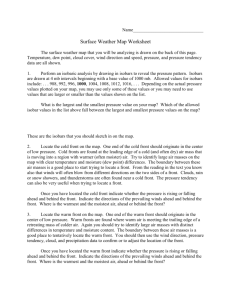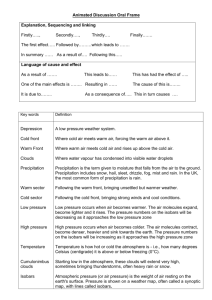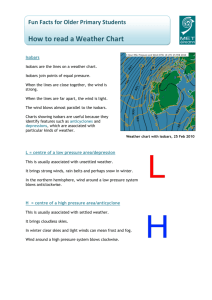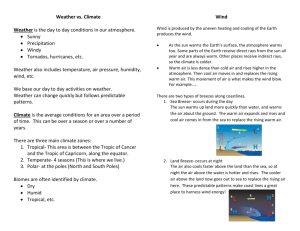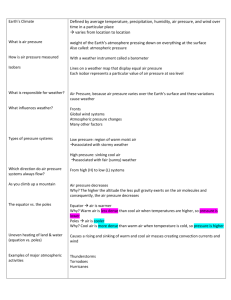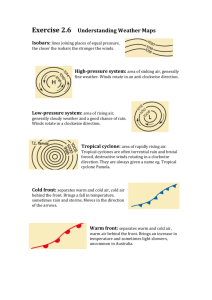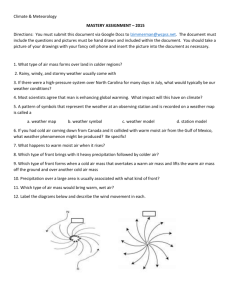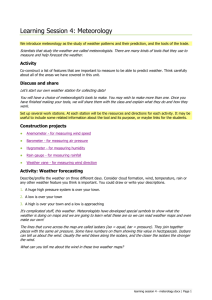Surface Weather Map Worksheet
advertisement
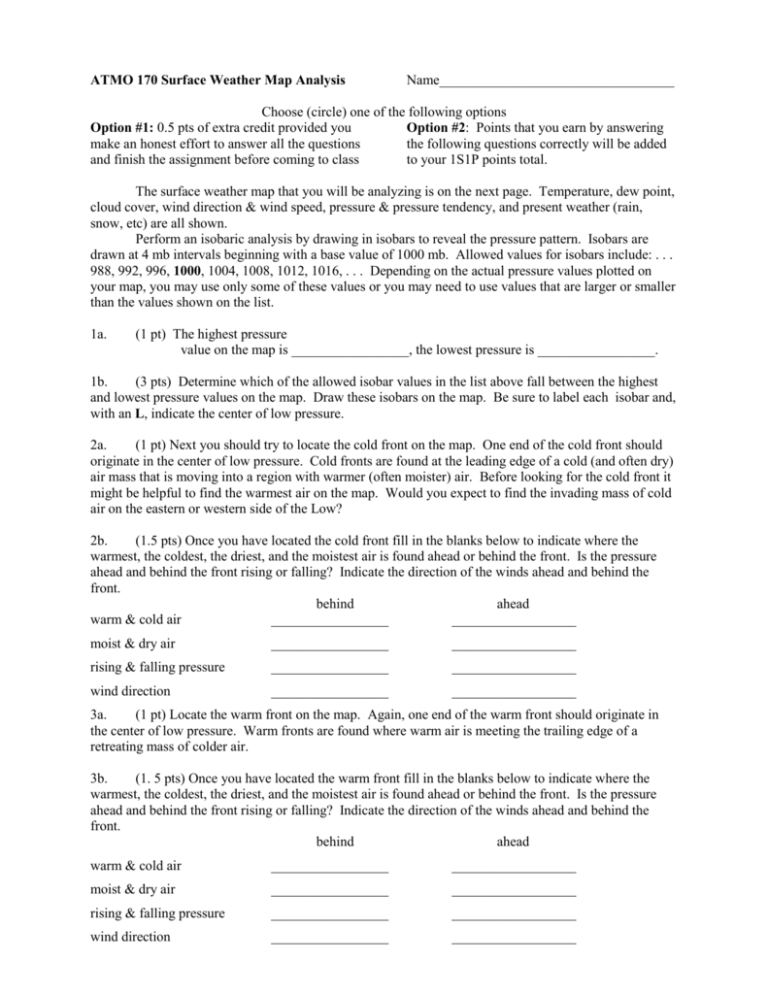
ATMO 170 Surface Weather Map Analysis Name__________________________________ Choose (circle) one of the following options Option #1: 0.5 pts of extra credit provided you Option #2: Points that you earn by answering make an honest effort to answer all the questions the following questions correctly will be added and finish the assignment before coming to class to your 1S1P points total. The surface weather map that you will be analyzing is on the next page. Temperature, dew point, cloud cover, wind direction & wind speed, pressure & pressure tendency, and present weather (rain, snow, etc) are all shown. Perform an isobaric analysis by drawing in isobars to reveal the pressure pattern. Isobars are drawn at 4 mb intervals beginning with a base value of 1000 mb. Allowed values for isobars include: . . . 988, 992, 996, 1000, 1004, 1008, 1012, 1016, . . . Depending on the actual pressure values plotted on your map, you may use only some of these values or you may need to use values that are larger or smaller than the values shown on the list. 1a. (1 pt) The highest pressure value on the map is _________________, the lowest pressure is _________________. 1b. (3 pts) Determine which of the allowed isobar values in the list above fall between the highest and lowest pressure values on the map. Draw these isobars on the map. Be sure to label each isobar and, with an L, indicate the center of low pressure. 2a. (1 pt) Next you should try to locate the cold front on the map. One end of the cold front should originate in the center of low pressure. Cold fronts are found at the leading edge of a cold (and often dry) air mass that is moving into a region with warmer (often moister) air. Before looking for the cold front it might be helpful to find the warmest air on the map. Would you expect to find the invading mass of cold air on the eastern or western side of the Low? 2b. (1.5 pts) Once you have located the cold front fill in the blanks below to indicate where the warmest, the coldest, the driest, and the moistest air is found ahead or behind the front. Is the pressure ahead and behind the front rising or falling? Indicate the direction of the winds ahead and behind the front. behind ahead warm & cold air _________________ __________________ moist & dry air _________________ __________________ rising & falling pressure _________________ __________________ wind direction _________________ __________________ 3a. (1 pt) Locate the warm front on the map. Again, one end of the warm front should originate in the center of low pressure. Warm fronts are found where warm air is meeting the trailing edge of a retreating mass of colder air. 3b. (1. 5 pts) Once you have located the warm front fill in the blanks below to indicate where the warmest, the coldest, the driest, and the moistest air is found ahead or behind the front. Is the pressure ahead and behind the front rising or falling? Indicate the direction of the winds ahead and behind the front. behind ahead warm & cold air _________________ __________________ moist & dry air _________________ __________________ rising & falling pressure _________________ __________________ wind direction _________________ __________________ Name__________________________________
